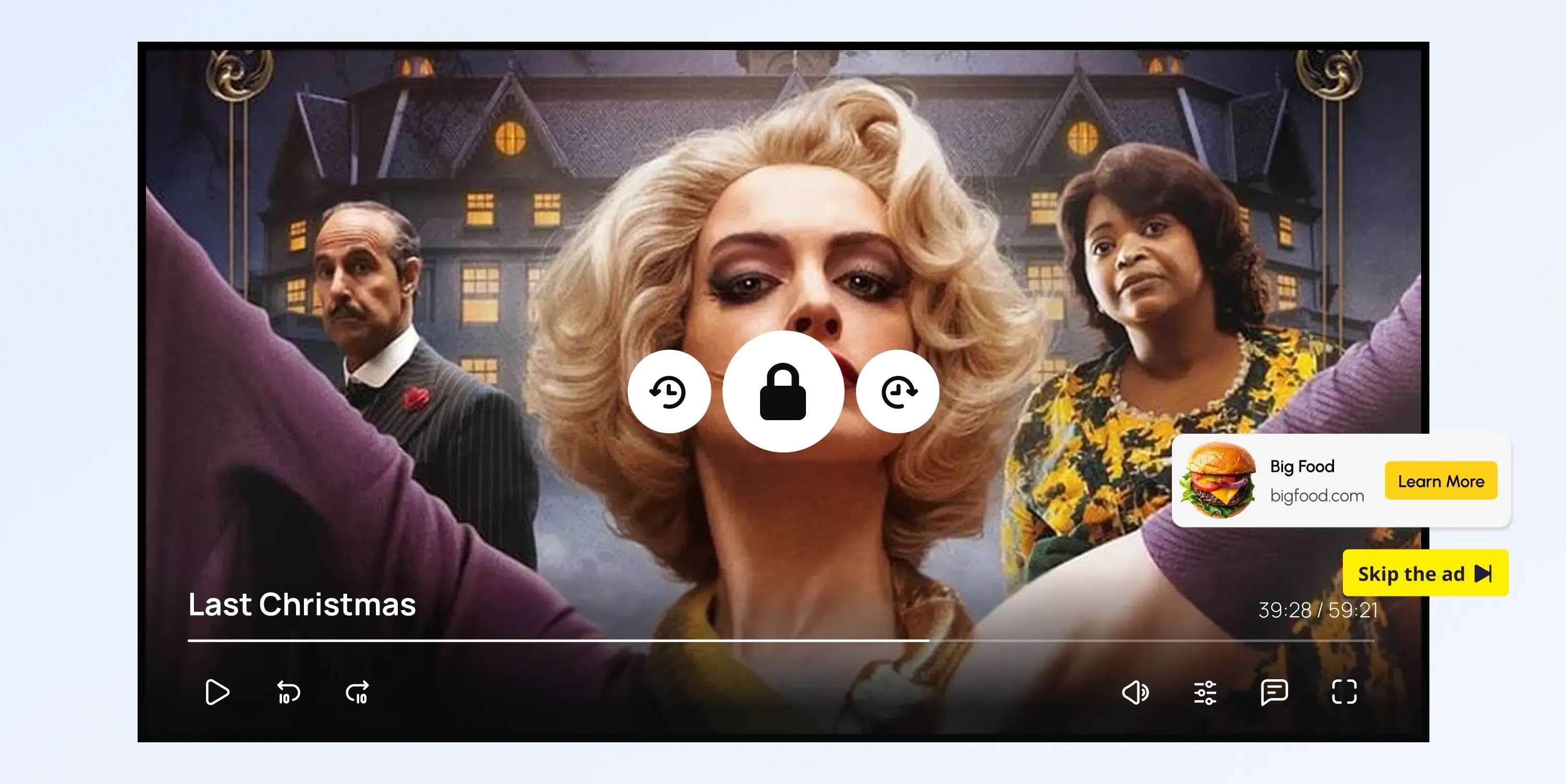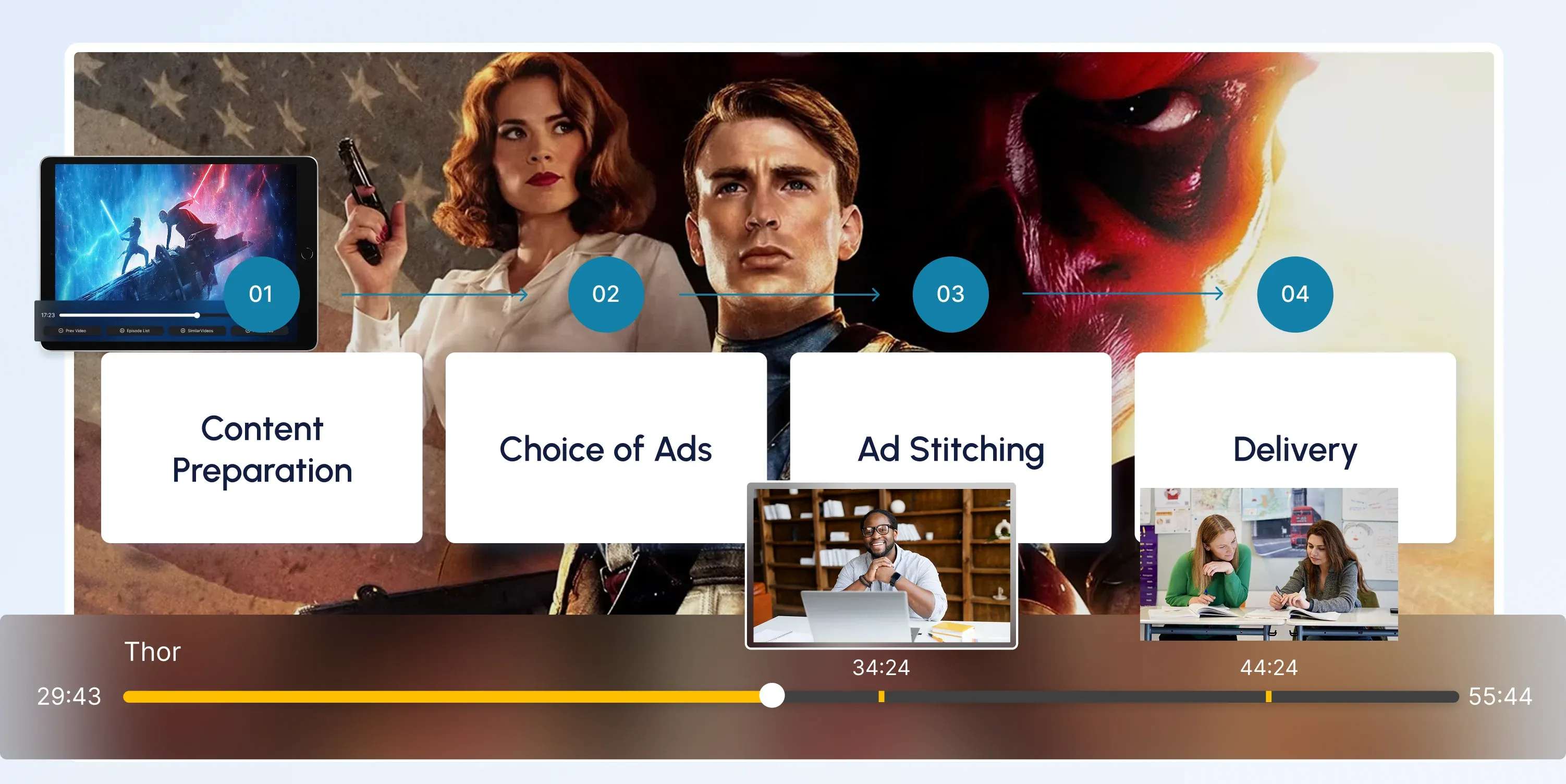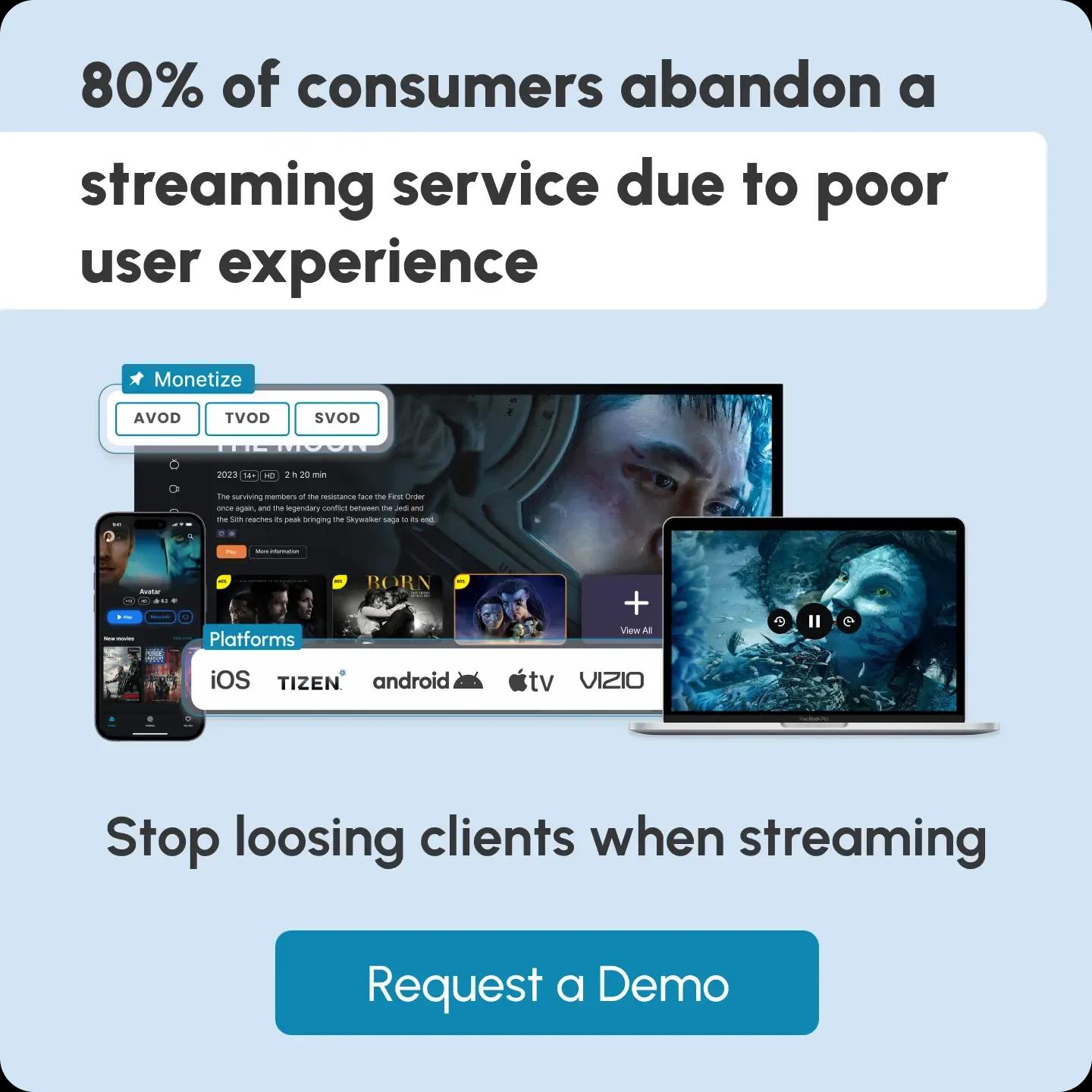Glossary term
SVOD (Subscription Video on Demand)

What Is SVOD?
SVOD (Subscription Video on Demand) is a type of streaming service where users pay a recurring fee (monthly, quarterly, or yearly) to access a library of video content.
This includes movies, TV shows, documentaries, and more, available to watch anytime on demand, as long as the subscription is active.SVOD is a type of streaming service where users pay a recurring fee (monthly, quarterly, or yearly) to access a library of video content. This includes movies, TV shows, documentaries, and more, available to watch anytime on demand, as long as the subscription is active.
Key Features of SVOD
Unlimited access to content during the subscription period
Recurring payments (e.g., monthly or annually)
Watch anytime - no schedule, unlike traditional TV
Often allows multiple user profiles and simultaneous streams
SVOD in the VOD Ecosystem
The VOD (Video on Demand) ecosystem includes all services that allow users to watch video content on demand, without following a broadcast schedule.
This ecosystem is typically divided into three main models:
SVOD (Subscription Video on Demand): Users pay a recurring fee to access unlimited content from a streaming platform.
AVOD (Advertising-Based Video on Demand): Users watch content for free but must view ads during playback.
TVOD (Transactional Video on Demand): Users pay per title to rent or purchase specific content on demand.
SVOD vs AVOD vs TVOD
For Users
| Aspect | SVOD | AVOD | TVOD |
|---|---|---|---|
| Access | Unlimited (with subscription) | Free (with ads) | Pay-per-view |
| Ads | Usually ad-free | Yes, ad-supported | No ads |
| Payment Model | Monthly/Yearly | Free to watch | One-time fee per title |
| Content | Full library | Select content | Individual titles |
| User Control | High | Medium (ads) | High |
For Content Providers
| Aspect | SVOD | AVOD | TVOD |
|---|---|---|---|
| Revenue Model | Predictable recurring revenue | Revenue based on ad impressions and CPMs | One-time purchases or rentals |
| Monetization Speed | Slower, but stable over time | Fast, scales with audience size | Immediate per transaction |
| Audience Reach | Limited to paying subscribers | Broadest reach (free access) | Moderate; only users willing to pay |
| Content Strategy | Invest in originals and retention-driven content | Focus on volume and ad-friendly formats | Premium, exclusive, or new-release content |
| User Data Access | Rich insights from subscribers | Strong ad-targeting data (but often less granular) | Limited to purchase behavior |
| Churn Risk | High—users may cancel anytime | Low—no subscriptions to cancel | N/A—pay-per-view model |
| Marketing Focus | Retention and value-added offerings | Ad inventory growth and audience expansion | Promotion of individual titles |
SVOD: Impact on the Entertainment Industry
Stage 1: Shift in Viewing Habits SVOD transformed how audiences consume content—on-demand, ad-free, and often binge-watched—moving away from traditional TV schedules.
Stage 2. Rise of Original Content Streaming services heavily invest in exclusive productions, fueling a boom in original series and films tailored for global audiences.
Stage 3. Decline of Traditional Media Cable TV, movie theaters, and physical media have seen sharp declines as viewers turn to more flexible SVOD platforms.
Stage 4. Data-Driven Decisions SVOD platforms use viewer analytics to shape content creation, marketing, and recommendations, making entertainment more personalized.
Stage 5. Global Reach and Market Competition SVOD enables instant international distribution and has sparked fierce competition among platforms, changing how content is licensed and valued.
Frequently Asked Questions
Content Writer
Anush Sargsyan is a content writer specializing in B2B content about OTT streaming technologies and digital media innovation. She creates informative, engaging content on video delivery, OTT monetization, and modern media technologies. The goal is to help readers easily understand complex ideas. Her writing is the bridge between technical detail and practical insight, making advanced concepts accessible for both industry professionals and general audiences.
Related terms

AVOD (Advertising-Based Video on Demand)
Explore how AVOD works, its monetization model, and why it's popular for free streaming platforms. Read the full definition on inorain.com glossary.

CSAI (Client-Side Ad Insertion)
Learn how CSAI delivers ads through the video player, enabling targeting, tracking, and monetization.

